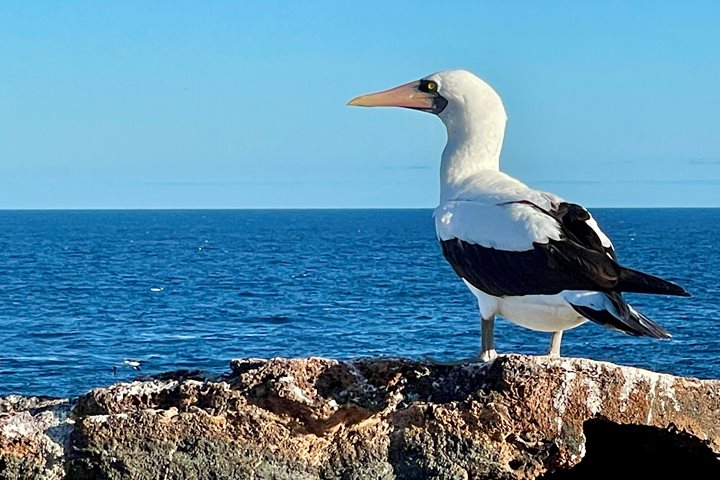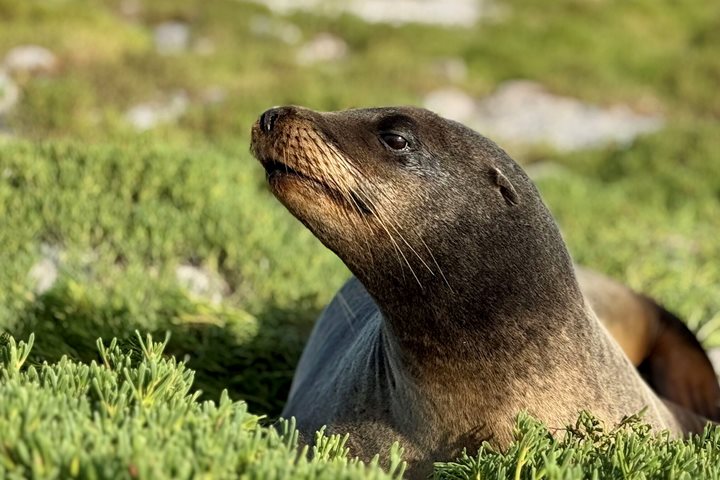A day of hiking on Genovesa Island under the warm tropical sun is a pristine paradise. During the morning we explored Darwin Bay, surrounded by red-footed boobies and frigatebirds, while the fresh ocean air and salty breeze accompanied us. Despite the sparse vegetation, the contrast between the volcanic rocks and the green mangroves creates a unique landscape full of life, with seabirds flying over our heads. In the afternoon, at Prince Philip’s Steps we saw Galapagos sea lions and fur seals resting on the rocks, and at the end of the trail a short-eared owl hidden among them. The gentle breaking of the waves and the songs of the birds immersed us in the serenity of this isolated corner of the world, where nature feels vibrant and pure.
- Daily Expedition Reports
- 08 Feb 2025
Genovesa Island, 2/8/2025, National Geographic Islander II
- Aboard the National Geographic Islander II
- Galápagos
Domenica Guerrero, Naturalist
Domenica was born in the port city of Guayaquil and grew up on a small island called San Cristobal in the Galapagos Islands, surrounded by sea lions and the beach. Her love and curiosity for marine life led her to become certified as a Scuba Diver an...
Read MoreShare Report
Galápagos Escape: A 7-Day Voyage
VIEW ITINERARYRelated Reports
6/13/2025
Read
National Geographic Islander II
Santiago Island
We started our day early in the morning at Chinese Hat. As our kayaks glided in the water, we had our first opportunity to watch Galapagos penguins swimming beside us. As we got closer to the shoreline, lava herons and blue-footed boobies stood motionless on the lava, watching our groups pass. In the late morning, we had the opportunity to have a very intimate moment with Galapagos penguins while they were hunting black-striped salemas. Penguins swam back and forth, trying to get as many fish as possible. The lunar landscape of Chinese Hat gave us an opportunity to observe the candelabra cactuses that grow on this recently formed lava field. In the afternoon, our expedition took us to Sullivan Bay. During a hike, we enjoyed one of the most amazing lava landscapes in the Galapagos. The visitor site invited us to think deeply about the genesis of life in the Galapagos Islands and how plants and animals arrived and established themselves here. As we returned to the ship, a beautiful sunset invited us to reflect on the geological and geographic qualities that make the Galapagos truly unique.
6/12/2025
Read
National Geographic Islander II
South Plaza and Santa Fe Islands
Our expedition on board National Geographic Islander II took us to the captivating South Plaza and Santa Fe Islands. We were treated to an extraordinary day of wildlife encounters and breathtaking landscapes, leaving us with a deeper understanding of the island’s unique ecosystems.







